Note: This is the entire essay as submitted; not all images were published in the book.
Every movement needs a voice, and ever since Gutenberg systematized the concept of movable type posters have been one of the media of choice for discontents, troublemakers, poets, organizers, and visionaries. Posters have served as the poor person’s pulpit for a very long time in this country. Benjamin Franklin’s network of print shops helped “stick it to the man” before this was even a country. When the rich and powerful control the major media, one could still find someone who knew how to put ink on paper to fire up a provocative and inflammatory message. These early broadsides - a single-sided newspaper sheets, usually (but not exclusively) featuring bold headlines and bold statements – were aptly named after the effect of a full row of cannon fire from a warship. Posters can make an impact.
Agitational posters, political posters, social justice posters – similar documents, known by different names - can be divided into two main categories. There are posters made by major organizations, such as the government, big unions, or large nonprofits, and posters made by small, spontaneous, community-based sources. This second category is where outlaw posters call home.
In the United States, there have been several moments when radical posters ruled. They were popular in the movement against slavery in the early 1800s, they were rediscovered in the 1930s when artists were hired by the Federal Arts Project. But after World War II they dropped off the radar for 20 years. The 1950s Cold War chill of McCarthy made such a medium too dangerous, and several paid the price. It may be hard to imagine now, but before 1964, the poster selection was pretty bleak: travel posters, film posters, and fine art reproductions. But a scant four years later the range of subjects and styles had proliferated exponentially. Sex, drugs, rock and roll, and revolution could adorn your wall for only a few dollars.
Two of the key sources and moments that influenced this generation of graphic artists were the posters coming out of Cuba during its “Golden Age” (approximately 1966 to 1972) and the street posters generated by art school students during the 1968 general strike in Paris. The powerful fusion of movements, including the counterculture, civil rights, the New Left, and national liberation, all nurtured each other and stimulated an orgy of creativity.
Underground newspapers and comics advanced at the same time, propelled by the same forces, and in many cases involved the same artists, producers, and distributors. The popularity of this new underground comics offered some of the poster artists expanded visibility and financial support. Artist Spain Rodriguez, who was prolific in both the comix and poster worlds, recalls:
“When [Robert] Crumb did the
first Zap, it just hit the whole
underground comix world like a hurricane—it was really a major thing.
It was beautiful, just a beautiful piece of work.”
But let’s separate the posturing outlaws – outlaws with a purpose - from the real ones. After all, just plastering portraits of Che Guevara around town didn’t really mean much after 1970. Some cultural workers (artists is really too constricting a term for this) were actually subversive, actually drawing outside the lines, actually messing with the nice, tidy, straight white male system. They operated as collectives. Many of them were “underground” in the truest sense – at risk of being caught and prosecuted for perceived crimes against the state.
One example was the Red Dragon Print Collective, the publishing arm of the Weather Underground. Although they didn’t make many posters, their clandestine practices displayed the seriousness of agitational printing at the time. One comrade remembers:
When we ran the Prairie Fire
book…we used gloves when handling paper to
make it hard for the authorities to identify us. We bought paper and
all other supplies with cash, hundreds of miles away. Because of
security issues we’d moved the press to another location, an apartment
where we triple-walled the pressroom for sound-proofing – a
room-within-a-room with foam-isolated floor, ceiling, and walls.
Finally the shop ended up in a third location, a huge building in a
decaying industrial area where we had less fear of being noticed going
in and out with tons of paper.
Sometimes pure satire was the sharpest weapon, as demonstrated by one outrageous gem created by Jeff Kramm for the fictional group with the audible-pun name “Selective Youth in Asia.” The artist did not use his name on the poster but instead used a logo he designed, for fear of reprisal by ROTC or other military-minded individuals.
Despite the mainstream hype, political activity continued after the “long 1960s.” One major struggle was the International Hotel, a ten-year fight to preserve a single-room occupancy residence full of people who had nowhere else to go. It pitted developers (and cops, and politicians) versus poor people of color, a very volatile mixture. Postermakers, as expected, were on the right side of that, even when the mounted police charged and the batons came down.
In the Bay Area, housing, gentrification, and displacement are unfortunately recurring issues, and over 20 years later more artists took up the squeegee to paste the word on the streets of our beleaguered city. Time passed, drawing out other groups, other messages – racism, imperialism, patriarchy, police brutality, Wall Street bailouts. It never ends.
In 2011, when various Occupy demonstrations rekindled a host of frustrations, artists set up in public spaces and helped re-image a movement. The lines for posters were longer than the lines for food. People were hungry for authentic, handmade reflections of their lives, something that could go on a wall and last longer than a Facebook post or a tweet.
Outlaw poster artists. Speaking truth to power since ink first hit big paper.
Images:
(All photos by Lincoln Cushing unless otherwise noted)
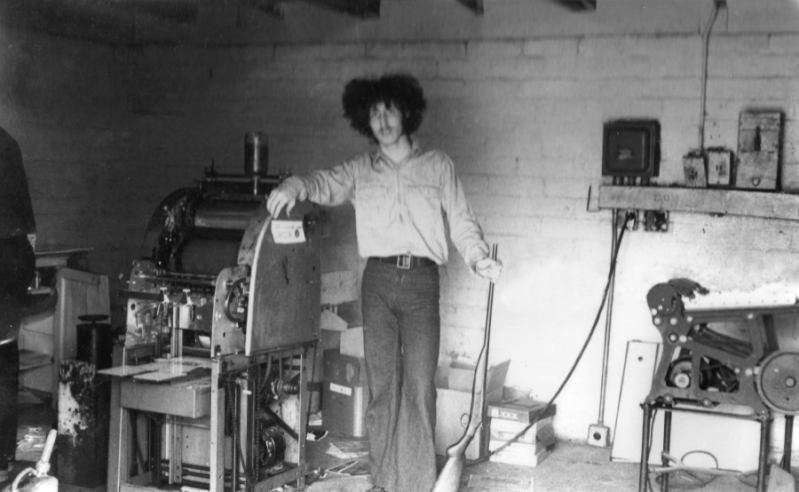
Noh Directions Press - Richard Krech, "Edna," and a .410 shotgun, at the boneyard, 1968. Photo by Harold Adler, all rights reserved.
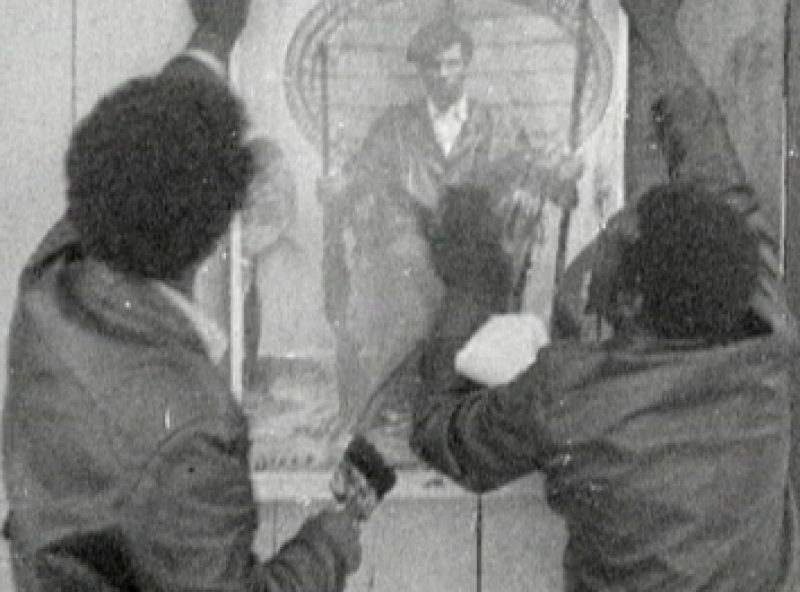
Black Panthers wheatpasting the famous “Huey Newton in the wicker chair” poster in San Francisco, circa 1966. Still image from California Newsreel footage, digitized courtesy the Prelinger Archives.
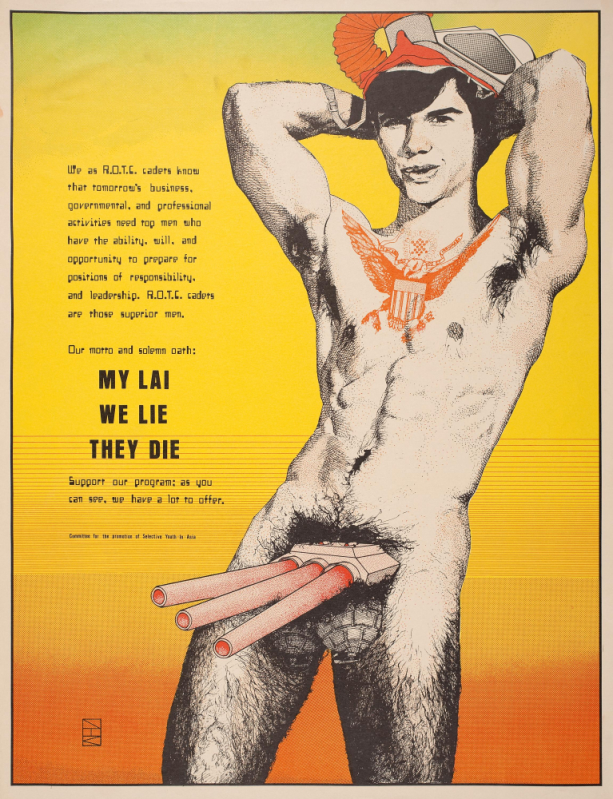
“My Lai, We Lie, They Die,” Jeff Kramm, 1970, offset.
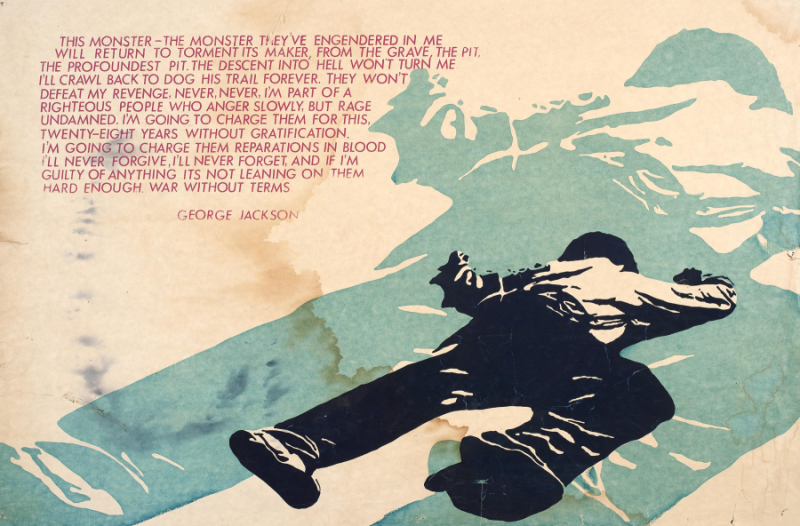
“This monster – The monster they’ve engendered in me…” by Doug Lawler, East Bay Media, circa 1971, screenprint.
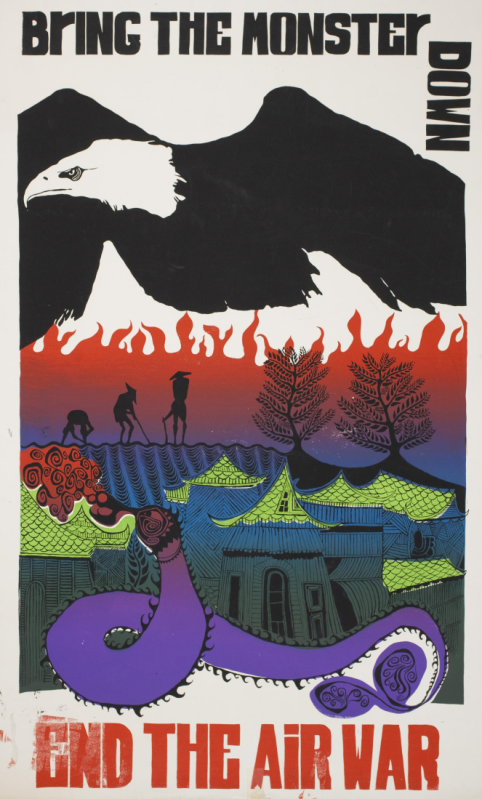
“Bring the Monster Down: End the Air War,” Doug Lawler; East Bay Media Center, 1972, screenprint.
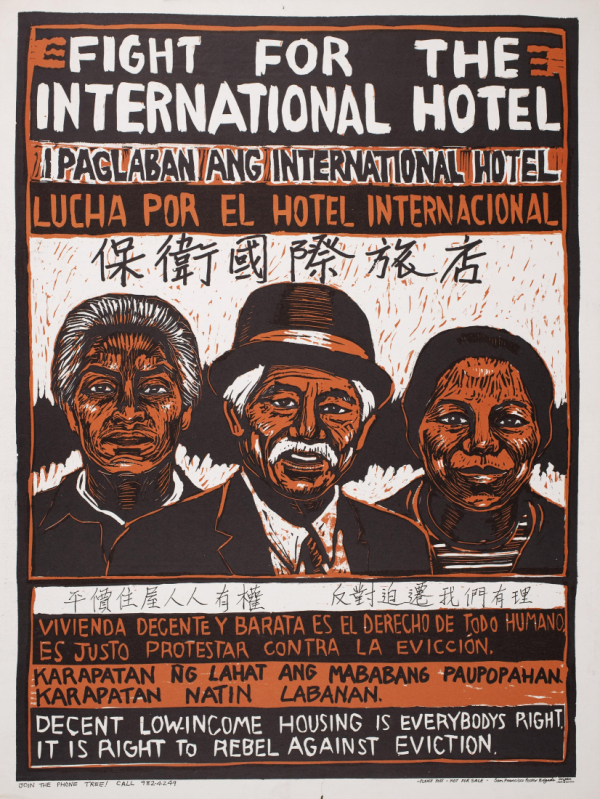
“Fight for the International Hotel,” Rachael Romero (San Francisco Poster Brigade), 1977, offset, Inkworks Press.
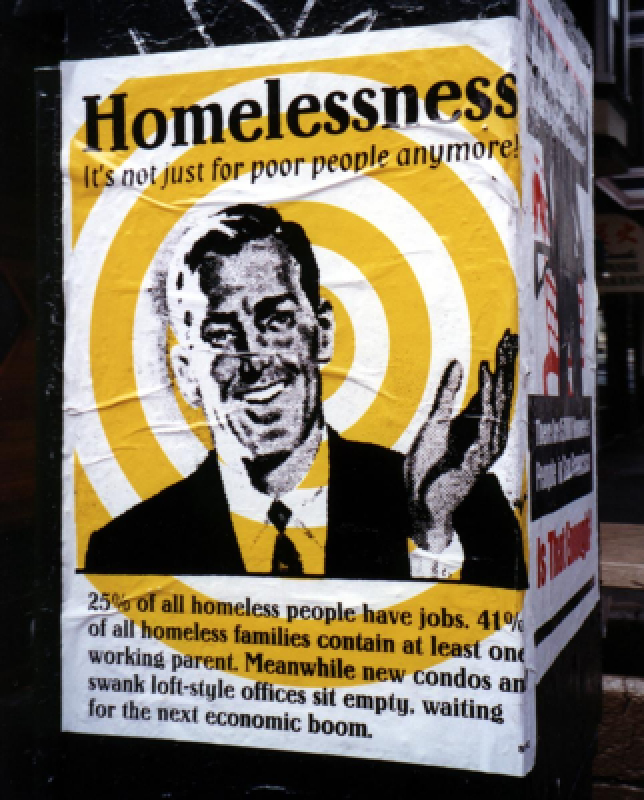
“Homelessness: It’s Not Just for Poor People Anymore!” San Francisco Print Collective, 2001, screenprint. Photo of wheatpasted poster in San Francisco courtesy the artists.

Jon-Paul Bail screenprinting posters at Occupy Oakland, 2011.
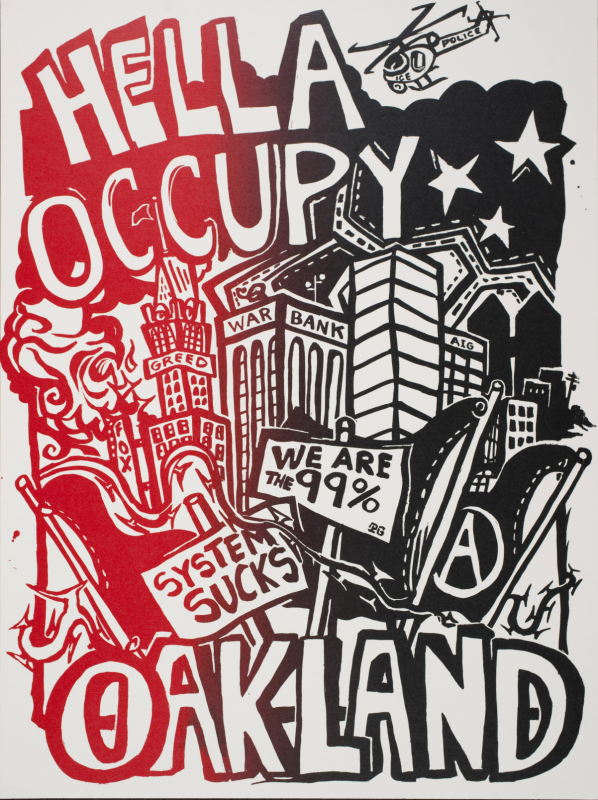
“Hella Occupy Oakland” by Jon-Paul Bail, 2011 (poster being printed in accompanying photo)
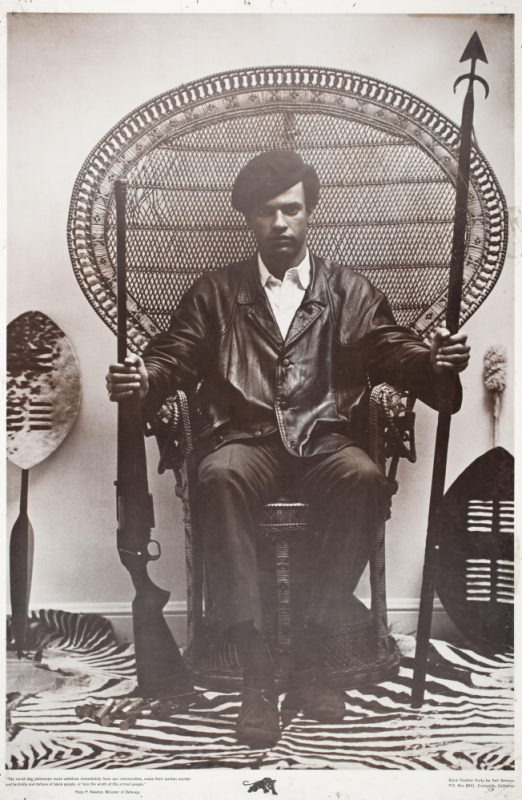
[Untitled, commonly referred to as “Huey Newton in the wicker chair,”] circa 1966, photo by Blair Stapp. (poster being wheatpasted in photograph second from top)
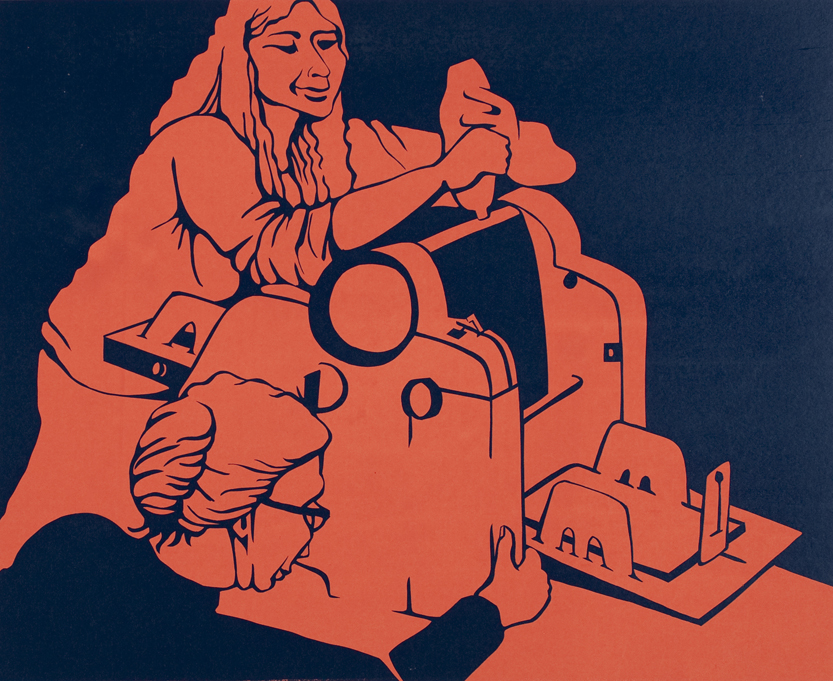
Return to Docs Populi - Documents for the Public
updated 4/23/2021